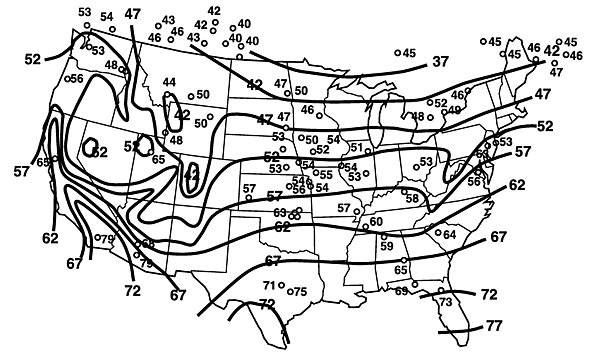Hi Dana,
I'm curious why an earth-bermed house would have a lower than typical SHR. Is it because (a) the earth berming will provide very good thermal insulation, so heat gain relative to a typical home will be lower, but internal humidity generation by occupant activities will be the same, or (b) the earth berming itself will be a source of additional internal water vapor, or both?
I'm guessing (a) only, as I would think that (b) would be something to avoid via proper vapor barrier usage.
Thanks,
Wayne
The high
thermal mass of the earth over the top and sides in combination with the insulation means you get next to zero solar gain through the roof and walls, so the sensible load becomes primarily from indoor sources of heat and window shading factors. The house is effectively earth-coupled to the subsoil temperatures, an not much affected by peak solar intensity or daily outdoor temperatures. That reduces sensible average & peak loads to something much smaller than on a typical stick built house. But assuming the house has been properly waterproofed, the latent loads from ventilation, occupant activities (breathing, cooking, bathing, etc) are the same as in any house.
In a place like Ft. Myers, the subsoil temperatures are in the already comfortable mid-70s, so with an insulated earth berm it should stay comfortable indoors as long as the interior heat and window heat gains are modest and get pumped out.
But the humidity of the ventilation air needs to be carefully managed in Ft. Myers, since it will likely become a driving factor of the latent loads in summer, given
outdoor dew points north of 60F nearly 100% of the time in July & August, north of a very sticky 70F more than 90% of the time.
Compare that kind of ventilation latent load to
Bay Area summertime dew points that only break 60F about 3% of the time. In most of CA an earth bermed house could do OK with just about any vendors' mini-splits, controlling indoor humidity by bumping up the ventilation rates when needed, since the ventilation's latent load is usually negative.
You can't dehumidify that way in Ft. Myers, and a room dehumidifier only converts that latent load into as sensible load. Using a Daikin Quaternity takes a big step forward on managing that load, but using Energy Recovery Ventilation (ERV) that does at least some amount of humidity transfer, rather than Heat Recovery Ventilation (HRV) or supply-only/exhaust-only strategies will also help quite a bit. It may still need further mechancal dehumidification than just a Quaternity if high ventilation rates are required, but it won't need nearly as much.
A heat pump water heater (HPWH) located indoors would also help reduce indoor humidity, putting that converted sensible heat into the water inside an insulated tank rather than into the indoor air. I recently responded to
his thread about the propane water heater suggesting it would be cheaper than propane even if located outdoors, but given the particulars of his cooling load profile it would be MUCH better on a total net energy basis to put it indoors, and forget about hooking up propane. The last thing you want to do is use propane for cooking indoor, since the primary exhaust product is water, and propane burner indoors would require high rates of exhaust ventilation, drawing in some of that torrid, humid outdoor air in summer. The HPWH would do double-duty, lowering the latent cooling load, and at an operating cost WAY below that of a condensing propane burner in that local market.

